Lamps, Slippers, Trumpets, and More: Recently Digitized Trade Catalogs
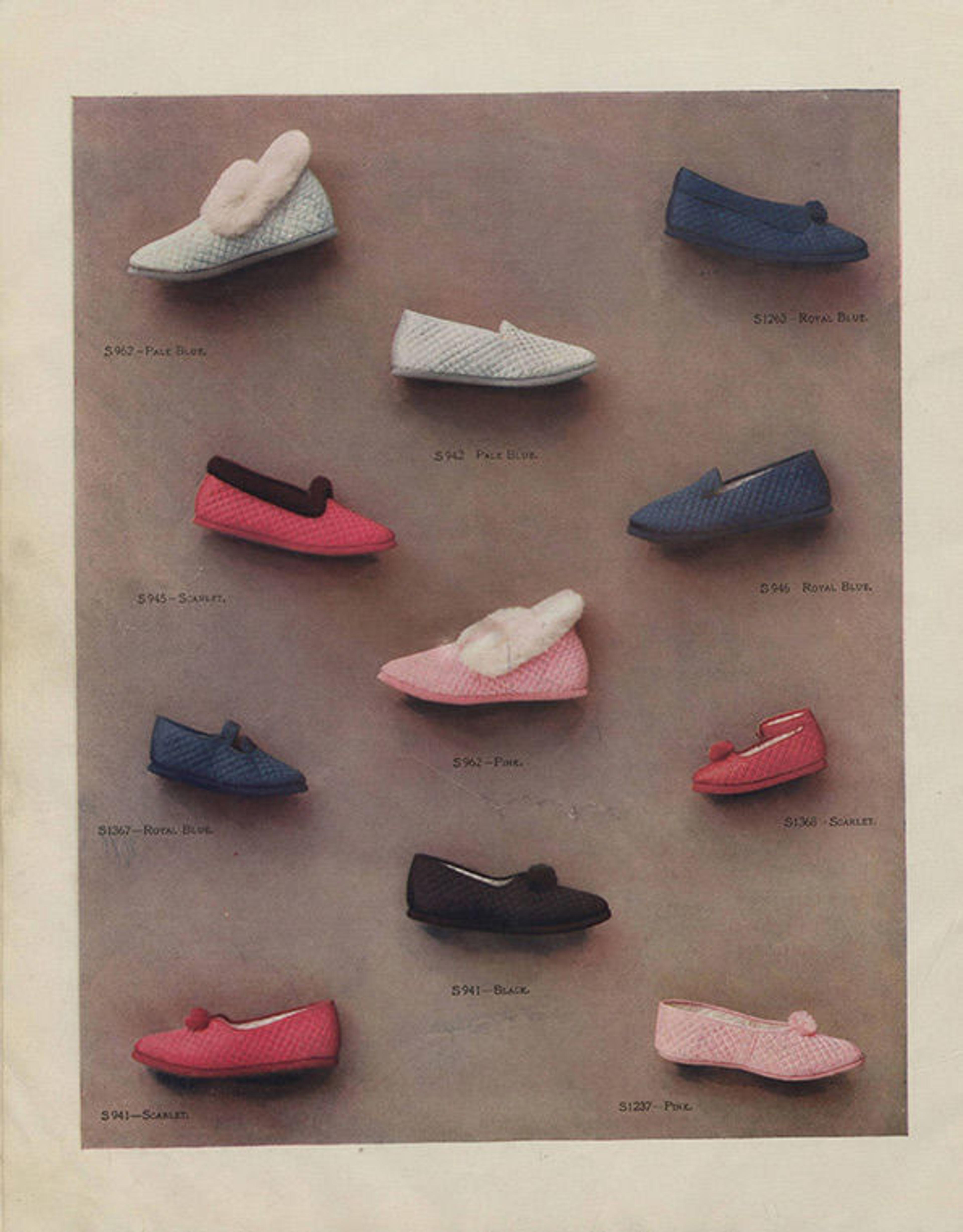
Gaghills Slipper Factory. Waterfoot (Manchester), England: H.W. Trickett Limited, 1906
«Trade catalogs have long been a way for businesses to show off their wares. Looking at these catalogs from past decades—sometimes centuries—gives us a glimpse into what the commercial and social life of earlier times was like. We can see what people used to wear, what sort of products they used to yearn for, and even how they lit their homes. In the Nagel-Chase catalog near the end of this post, you'll see that a "600 candle power" chandelier is offered up for sale, confronting you with an age in which illumination was still thought of in terms of candles—something almost totally alien to most of us today.»
Watson Library has a strong collection of international trade catalogs (manufacturer, wholesale, and retail catalogs), dating from the eighteenth century all the way up to the present. With an emphasis on the decorative arts—especially Art Nouveau and Art Deco design—subjects range from fashion, silks, textiles, and wallpaper, to furniture, industrial design, jewelry, and ceramics. Other subjects include ornamental motifs, wrought iron, elevators, clocks, tableware, tiles, stoves, fireplaces, lighting, artist materials, picture frames, woodwork, paneling, typography, and automobiles.
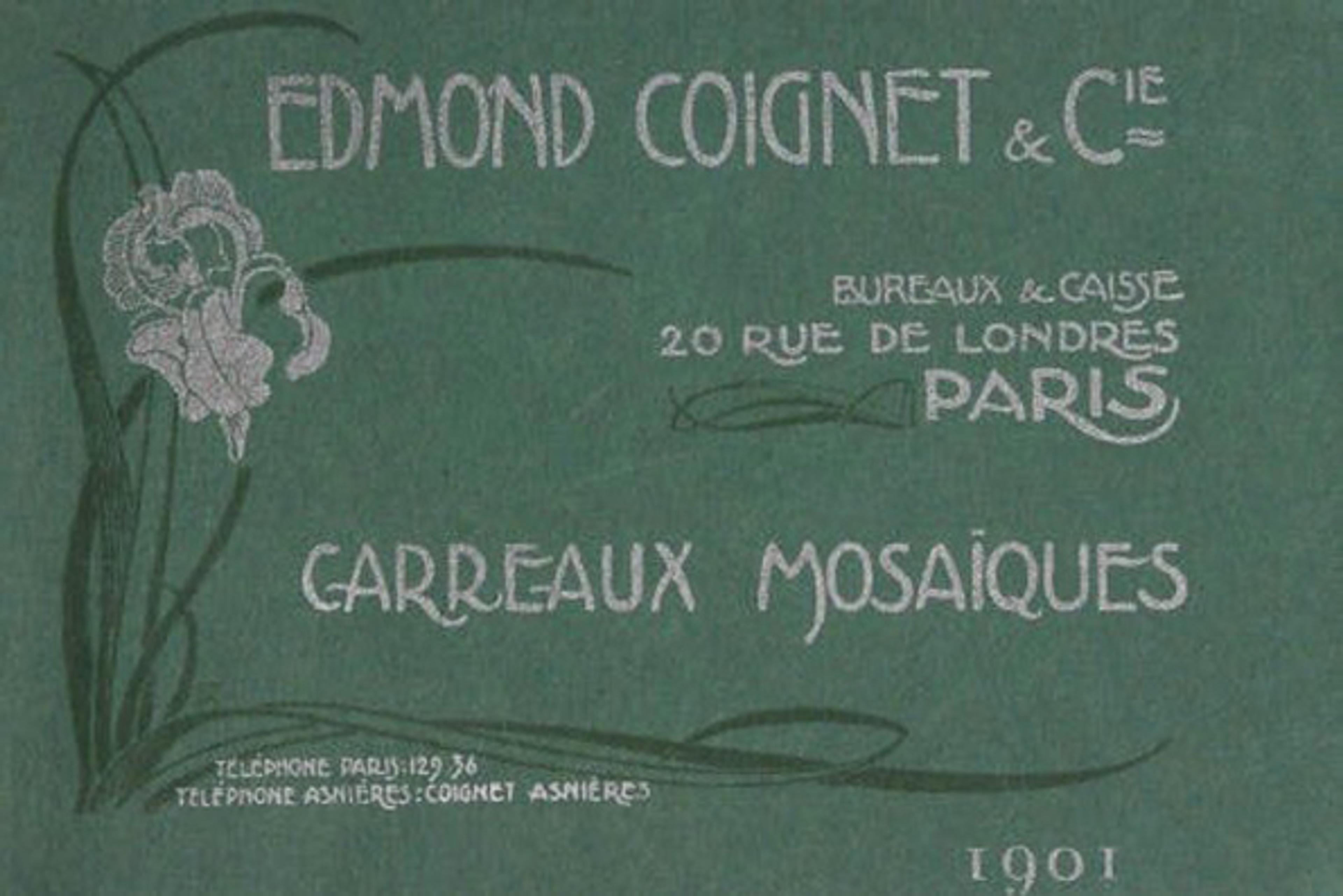
Carreaux Mosaïques.Paris: Edmond Coignet & Cie, 1901
The library recently purchased twenty-five tile trade catalogs, including four from Paris manufacturer Edmond Coignet & Cie. Notable for their Art Nouveau covers, they feature multicolored tile patterns with geometric configurations. For example, Carreaux mosaïques offers cement tile designs inspired by Egyptian, Byzantine, Gothic, Medieval, Pompeian, Celtic, and Venetian designs, among others. Coignet & Cie also produced vitrified ceramic tiles (resembling glass) for interior applications, exterior walls, and sidewalks.

Gaghills Slipper Factory. Waterfoot (Manchester), England: H.W. Trickett Limited, 1906
The library also has a large collection of wholesale and retail fashion catalogs. This charming early twentieth-century slippers catalog features a sampling of "Fancy Felts, Quilted Satins and Camel Hair" footwear. Manufactured in Waterfoot, a small town in Lancashire, near Manchester, the Gaghills slipper factory proclaims it to be "the 'home' of the largest slipper factory in existence"—producing seventy-two thousand pairs of slippers and canvas shoes per week, with sales in "Canada, sunny West Indies, on the African veldt, under the Southern Cross, in our great Indian Empire, and in the land of the Celestials."
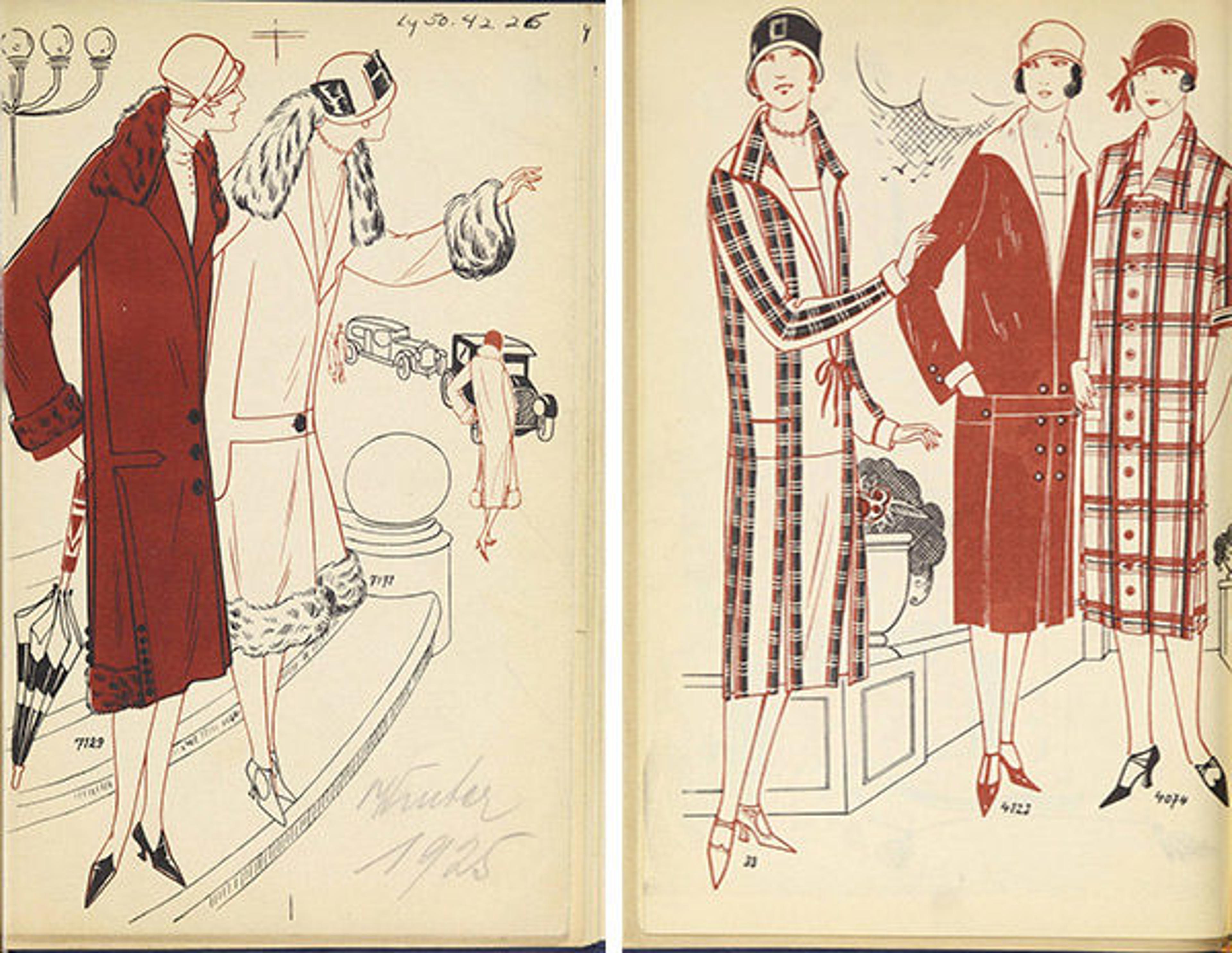
Swiss fashion catalog (1925)
Another lively fashion catalog with whimsical illustrations is this 1920s Swiss catalog presenting the latest fashions of the year, including daytime pleated dresses and coats with fur collars.

Matériels d'orchestre, accessoires de batterie, saxophones, banjos, instruments spéciaux de jazz-band.[Paris]: Couesnon & Cie, 1924
In addition to being a valuable primary resource documenting the culture of the times, trade catalogs aid researchers in identifying a specific type, model, or design of an object as it originally appeared. For example, this wonderful music catalog published in 1924 offers up for sale key instruments for a jazz band, including several models of drums, guitars, banjos, accordions, saxophones, and trumpets. One noteworthy customer listed by the manufacturer, Coueson & Cie, was the Folies-Bergère.
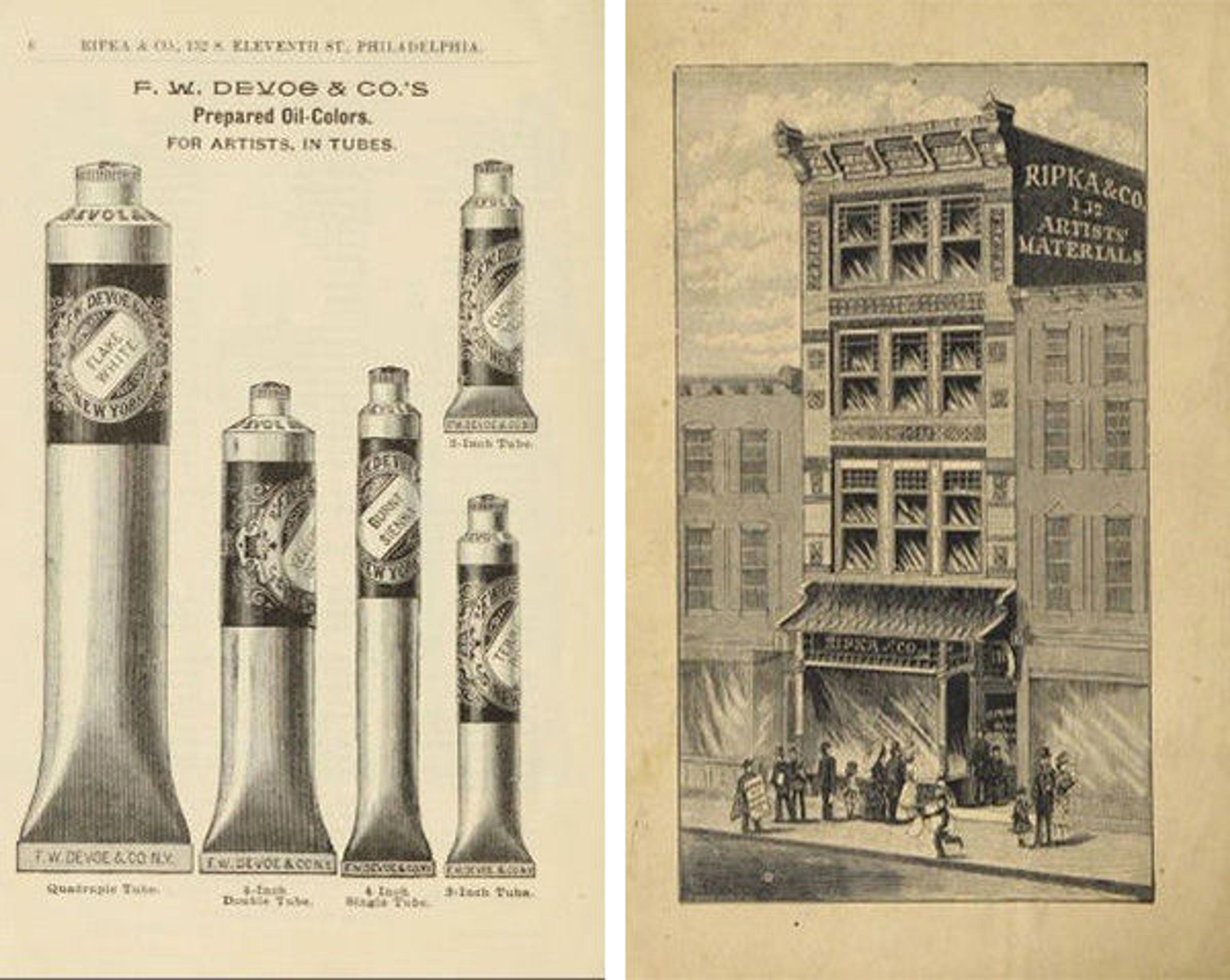
Catalogue of Ripka & Co.: Importers and Manufacturers of Artists' Materials.Philadelphia: Ripka & Co., 1893
Trade catalogs featuring artists' materials provide insight into not only artists' materials but also their methods from the past. Paint catalogs are especially useful, documenting colors available to artists during that time. For example, Ripka & Co.'s catalog published in 1893 offers a spectrum of materials including pencils, pastels, crayons, brushes, ink, drafting tools, sketch books, plaster molds, box sets, easels, and oil paint tube colors. Sometimes, trade catalogs include an illustration or photograph of their shop or factory, as here included by Ripka & Co., of an animated street scene assembling around its store.
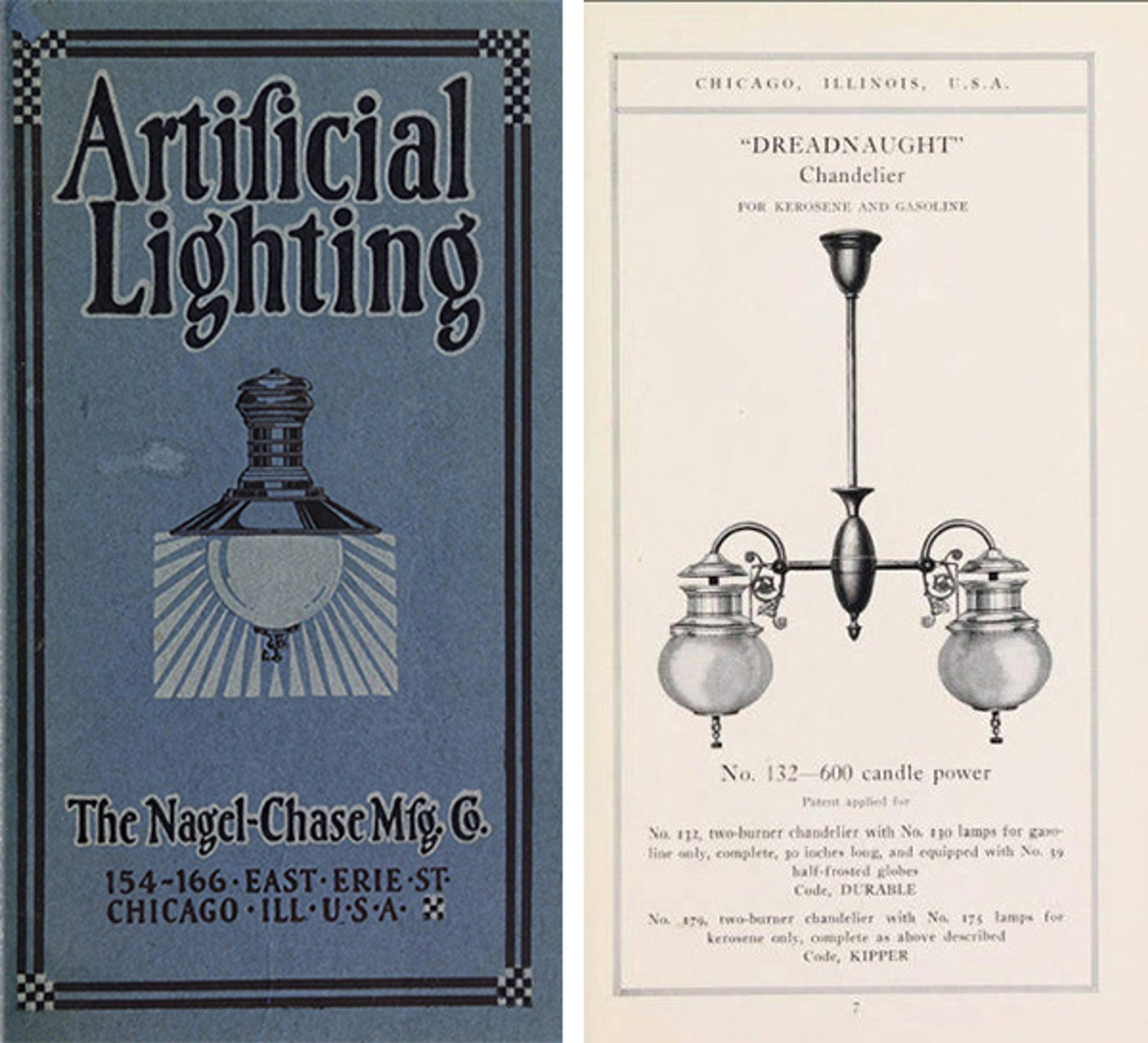
Kerosene and Gasoline Lighting Systems: For the Illumination of Stores, Residences, Halls, Opera Houses, Churches, Streets, Boulevards, Parks, Wharves, Railway Stations, etc.: 1915–1916. Chicago, Ill.: Nagel-Chase Mfg. Co., 1915
A final example of Watson's expansive collection of trade catalogs and wide subject matter is a collection of lighting catalogs from the nineteenth century through to the present. Nagel-Chase Mfg. Co., a Chicago-based supplier, has a catalog from 1915 that presents lighting "for the illumination of stores, residences, halls, opera houses, churches, streets, boulevards, parks, wharves, railway stations, etc." Its featured "Dreadnaught" chandelier is a dual-fuel lamp designed to burn either kerosene or gasoline.
Enjoy our growing collection of fully digitized trade catalogs here.
Holly Phillips
Holly Phillips is the collections manager for acquisitions in Thomas J. Watson Library.